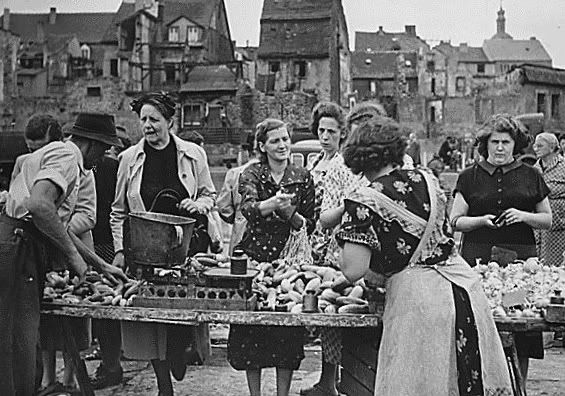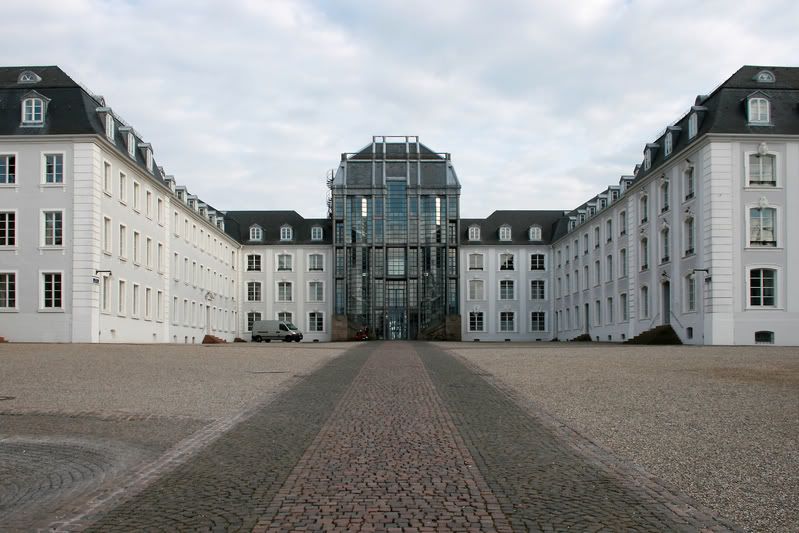Some of you might enjoy a virtual tour of the city of Saarbrücken, my last home before I came to the United States:
Max Ophuels Preis_Trailer_2009 from LICHTFAKTOR on Vimeo.
Located at the French border, my father’s house was literally five minutes walking distance, and the high and low German language border, Saarbrücken has had a tumultuous history. For centuries, it has been a hot spot of Protestant-Catholic and Franco-German conflict.
Saarbrücken used to be the capital of a Nassau principality. The Princes of Nassau were related to the house of Orange who led the Dutch Republic, especially in times of war, and even captured the British throne during the Glorious Revolution.
During the 30 Year War in 1637, the town was reduced to a population of less than 70 people. In 1677, Louis XIV torches the entire city except for eight houses.
After World War I and World War II, the area is not only occupied but annexed by France. The youth of the province are decimated as paratroopers. The city is liberated in 1944, which would have been alright had it not been for the German forces retaking the city, exposing the residents to three battles during World War II.
The first slides of the video depicts a price winning power plant that is so clean that it is located almost in the heart of the city. The plant does not only generate electricity but its cooling water heats the historic quarters entirely.
The big cobble stoned area is the Palace Square, which is also the location of the Invisible Memorial. During the 1990s, the art professor Jochen Gerz and some of his students begun removing cobble stones surreptitiously and began to mark their bottom side with the name of former Jewish cemeteries. Eventually, city hall joined the project. Today, the Invisible Memorial marks the 2,146 German towns that used to have Jewish cemeteries before 1933.
The Invisible Memorial is supposed to symbolize the displacement of history. The ingenious paradox is, of course, that the Invisible Memorial requires Saarbrücken residents to talk about it if they want to show it to their friends.
Notice that the center and right wing of the palace still has late baroque curved windows while the left wing already abides by the strict geometric rules of classicism with rectangular windows.
The most interesting part, however, is the steel frame in the center, which protects the only original parts of the palace from the elements. If you look closely, you can see the brown stone at the bottom of the building. The shape of the structure traces the shape and height of the original palace before it was burned in 1677.
If you visit Saarbrücken today, you can see French police downtown every day. French and German police now will cross the border in pursuit of criminals for up to 100 kilometers as a matter of course.
People like to knock the European Union but if you live in Saarbrücken, you are in awe of how much things have changed in only one generation.


I lived in Saarbrücken for 5 months while on my mission – from Nov 2003-April 2004. I loved the city, and there were a couple of members there I bonded with more than usual. One was an older German lady who lived through the war, and told us stories of how she had to hide herself and her infant during one of the battles you mentioned. Her stories made a significant impact on how I viewed WWII and the suffering of the Germans before, during and after the war. It was a very eye-opening experience.
I do remember seeing the French police, and that the Straßenbahn would give announcements in French as you approached the Hauptbahnhof (Gare Centrale)
By the time, you were in Saarbrücken, Craig, I was already gone. I had left in 1994 for grad school at BYU.
My family had also left the church by then.
Wow, that’s an amazing idea for a memorial. It illustrates how segments of history can be buried and hidden.
That was great. I love Germany.
I will also never forget the day when we drove over a bridge and suddenly realized we were in France, not Germany anymore. By driving over a bridge. No border, no controls at all. Having been raised on my western world history, I was totally not prepared for how very open the borders now are. It’s amazing if you really think about it. And so cool.
Loved this Hellmut. I was in Saarbrcken only a couple of years ago on a trip with my family and we visited the palace, including the old walls and embattlements that are on observation below the baroque wing.
Saarbruecken was one of the few places I didn’t get to visit whilst on my mission. As with Craig, my time in Germany really opened my eyes to the suffering of the German peoples.
My first area, Solingen, famous for steel and knife manufacture seemed full of people who’s families had been post-war refugees from East Prussia. I now know that this was one of the largest forced migrations ever, second only to the chaos after Indian partition. For some reason a topic largely ignored by mainstream history.
I’d very much like to visit Saarbruecken if I ever get the chance. Even today it seems to have a strong cultural identity all of its own.